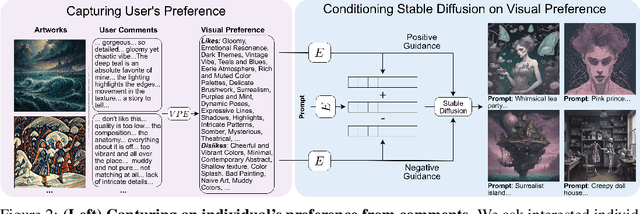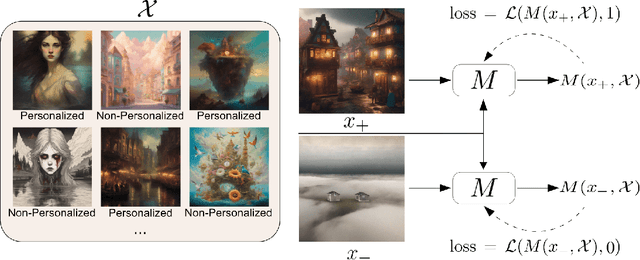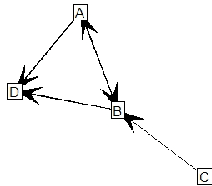Mahdi Shafiei
ViPer: Visual Personalization of Generative Models via Individual Preference Learning
Jul 24, 2024



Abstract:Different users find different images generated for the same prompt desirable. This gives rise to personalized image generation which involves creating images aligned with an individual's visual preference. Current generative models are, however, unpersonalized, as they are tuned to produce outputs that appeal to a broad audience. Using them to generate images aligned with individual users relies on iterative manual prompt engineering by the user which is inefficient and undesirable. We propose to personalize the image generation process by first capturing the generic preferences of the user in a one-time process by inviting them to comment on a small selection of images, explaining why they like or dislike each. Based on these comments, we infer a user's structured liked and disliked visual attributes, i.e., their visual preference, using a large language model. These attributes are used to guide a text-to-image model toward producing images that are tuned towards the individual user's visual preference. Through a series of user studies and large language model guided evaluations, we demonstrate that the proposed method results in generations that are well aligned with individual users' visual preferences.
Mixed-Membership Stochastic Block-Models for Transactional Networks
Oct 07, 2010



Abstract:Transactional network data can be thought of as a list of one-to-many communications(e.g., email) between nodes in a social network. Most social network models convert this type of data into binary relations between pairs of nodes. We develop a latent mixed membership model capable of modeling richer forms of transactional network data, including relations between more than two nodes. The model can cluster nodes and predict transactions. The block-model nature of the model implies that groups can be characterized in very general ways. This flexible notion of group structure enables discovery of rich structure in transactional networks. Estimation and inference are accomplished via a variational EM algorithm. Simulations indicate that the learning algorithm can recover the correct generative model. Interesting structure is discovered in the Enron email dataset and another dataset extracted from the Reddit website. Analysis of the Reddit data is facilitated by a novel performance measure for comparing two soft clusterings. The new model is superior at discovering mixed membership in groups and in predicting transactions.
 Add to Chrome
Add to Chrome Add to Firefox
Add to Firefox Add to Edge
Add to Edge